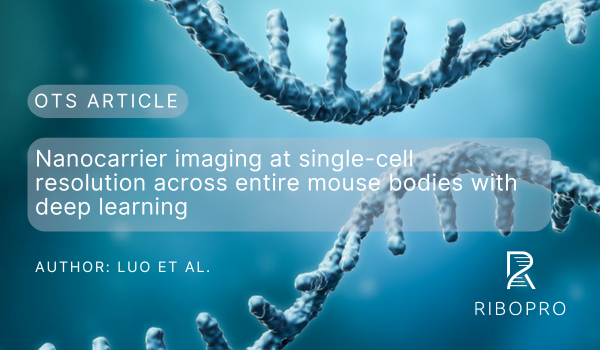Authors
Rik Oude Egberink, Deni M. van Schie, Ben Joosten, Lisa.T.A. de Muynck, Ward Jacobs, Jenny van Oostrum, Roland Brock
Keywords
Co-transfection, Endosomal escape, Gene therapy, mRNA delivery, Nanomedicine, Nanoparticles, custom mRNA, OTS mRNA
DOI
https://doi.org/10.1016/j.ejpb.2024.114414
Journal: European Journal of Pharmaceutics and Biopharmaceutics
PMID: 39009193
Abstract
The messenger RNA (mRNA) SARS-CoV-2 vaccines have demonstrated the therapeutic potential of this novel drug modality. Protein expression is the consequence of a multistep delivery process that relies on proper packaging into nanoparticle carriers to protect the mRNA against degradation enabling effective cellular uptake and endosomal release, and liberating the mRNA in the cytosol. Bottlenecks along this route remain challenging to pinpoint. Although methods to assess endosomal escape of carriers have been developed, versatile strategies to identify bottlenecks along the delivery trajectory are missing. Here, it is shown that co-incubating an inefficient nanoparticle formulation with an efficient one solves this problem. Cells were co-incubated with mRNA nanoparticles formed with either the efficient cell-penetrating peptide (CPP) PepFect14 or the inefficient CPP nona-arginine (R9). Co-transfection enhanced cellular uptake and endosomal escape of R9-formulated mRNA, resulting in protein expression, demonstrating that both vectors enter cells along the same route. In addition, cells were transfected with a galectin-9-mCherry fusion protein to detect endosomal rupture. Remarkably, despite endosomal release, mRNA remained confined to punctate structures, identifying mRNA liberation as a further bottleneck. In summary, co-transfection offers a rapid means to identify bottlenecks in cytosolic mRNA delivery, supporting the rational design and optimization of intracellular mRNA delivery systems.



